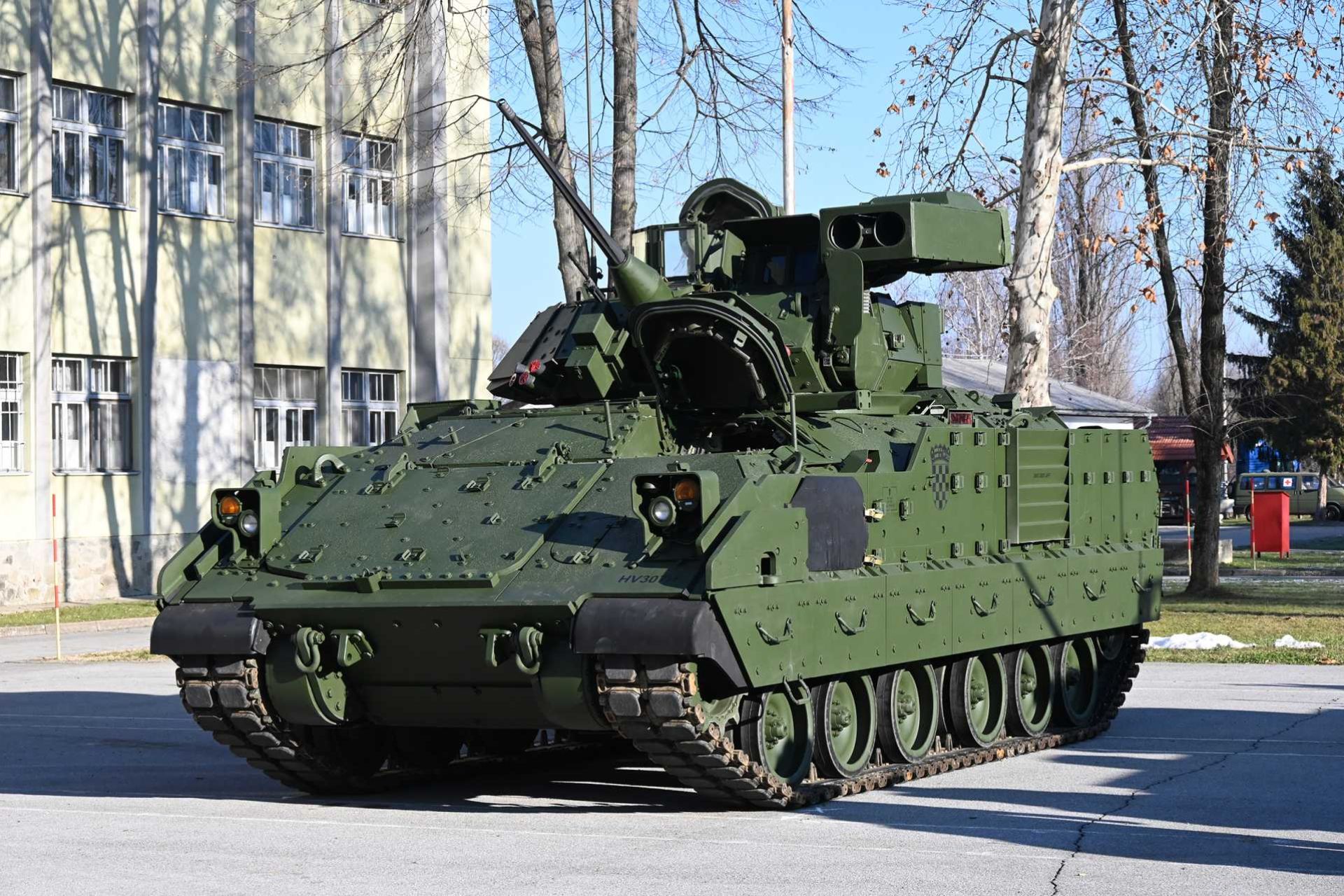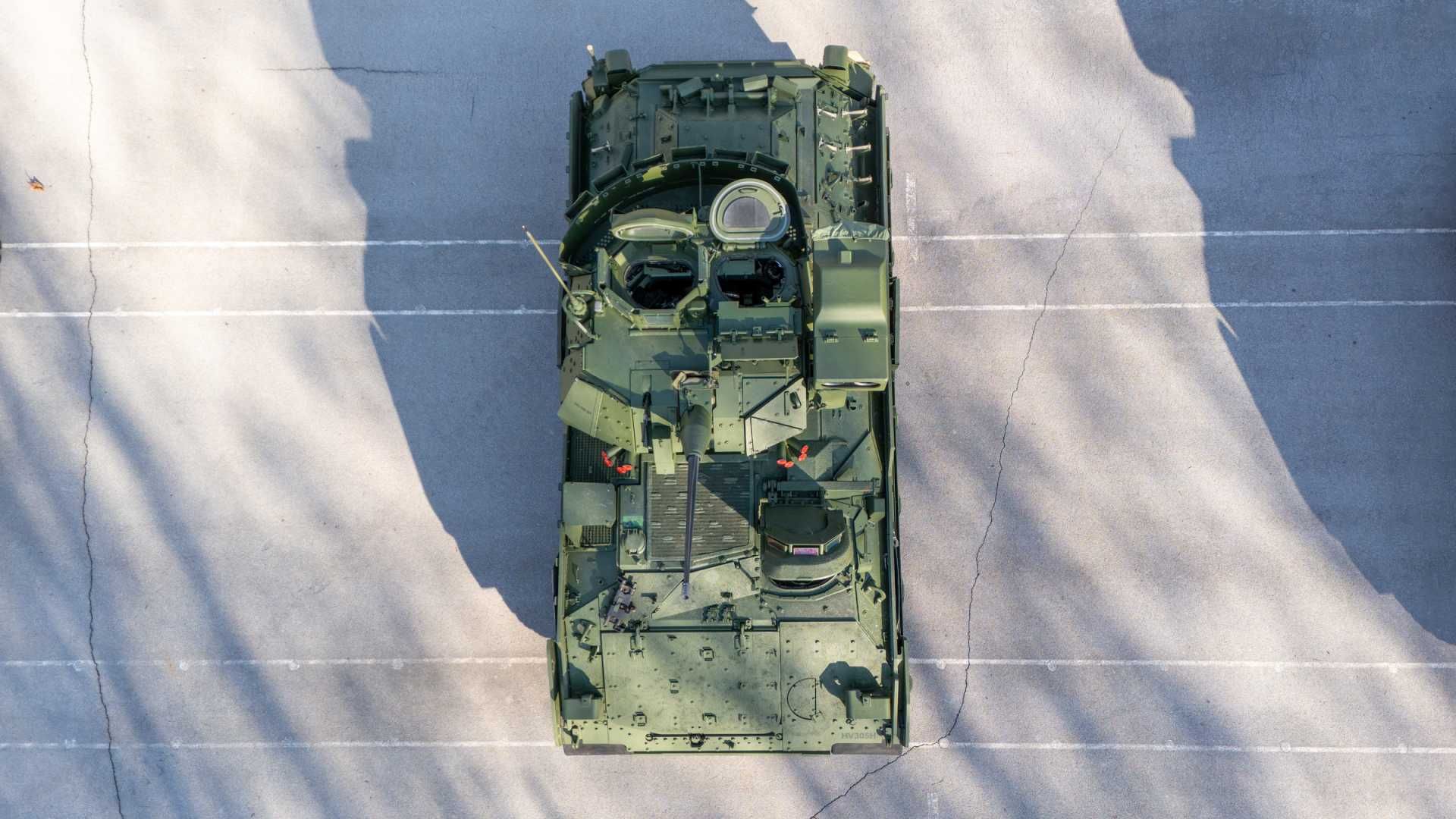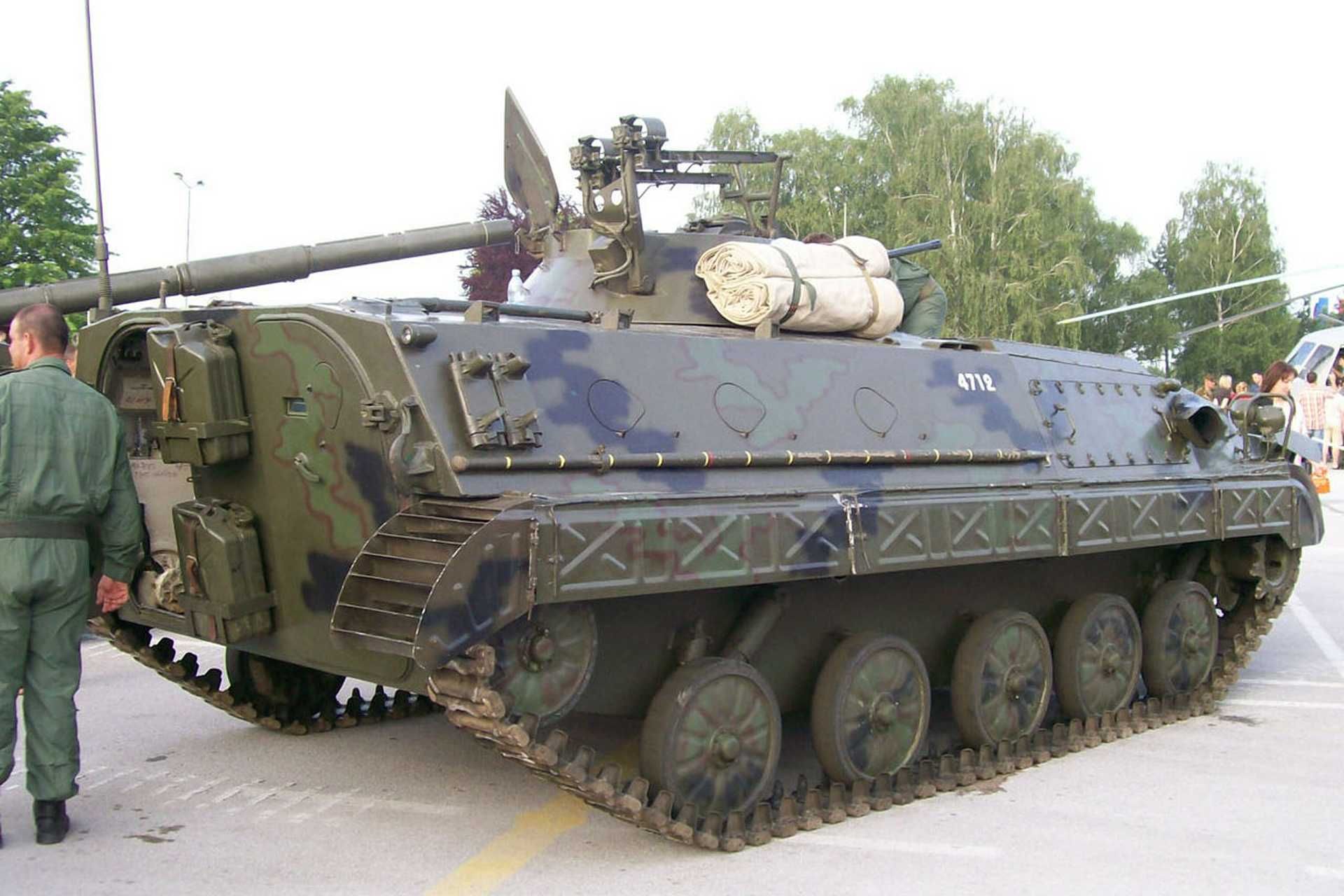Breaking News
Croatian Army deploys first US-supplied M2A2 Bradley fighting vehicles to strengthen its mechanized brigades.
On January 14, 2025, the Croatian Ministry of Defense announced the delivery of the first four M2A2 ODS Bradley Fighting Vehicles to the Croatian Armed Forces. This delivery, conducted at the Našić barracks, is part of a modernization program designed to enhance Croatia’s mechanized infantry capabilities. The program involves the acquisition of 89 Bradley vehicles under a $196.4 million agreement, which includes a $51.2 million contribution from the United States. The program is scheduled for completion by 2026, with another four vehicles expected to be delivered by the end of January 2025.
Follow Army Recognition on Google News at this link

Croatia will receive a total of 89 Bradleys, allocated as follows: 62 for operational units, primarily the Sokolovi Battalion of the Guards Armored Mechanized Brigade; five for training; and the remainder for spare parts. (Picture source: Croatian MoD)
The 89 vehicles are allocated as follows: 62 for operational units, primarily the Sokolovi Battalion of the Guards Armored Mechanized Brigade; five for training; and the remainder for spare parts. Deliveries are phased to ensure operational readiness by 2026. The vehicles delivered to Croatia are based on the baseline ODS model, which lacks certain features such as second-generation FLIR and the Driver’s Vision Enhancer included in the 300+ ODS-SA variants delivered to Ukraine.
These Bradleys have undergone refurbishments at the Đuro Đaković facility, including drivetrain overhauls, weapon system integration, and protective coatings. Upgrades also include enhancements to engines, transmissions, electronic systems, TOW anti-tank missile integration, and advanced communication systems. These modifications aim to improve situational awareness, protection, and NATO compatibility.
Croatia's decision to acquire these US-made IFVs dates back to 2022 as part of an effort to replace its aging fleet of BVP M-80s, a Yugoslavian infantry fighting vehicle (IFV) developed in the 1970s to replace the M-60 armored personnel carrier. Its design was influenced by the Soviet BMP-1 and featured a fully amphibious chassis and a turret-mounted 20mm autocannon. The first prototype was completed in 1974, and the production model, M-80, entered service in 1979. The initial version used a French-built 260-horsepower engine, while the M-80A variant, introduced later, incorporated a domestically produced Daimler-Benz engine with 320 horsepower for improved performance. Before the dissolution of Yugoslavia in the early 1990s, approximately 1,000 units were manufactured.

The M2A2 ODS-SA (Operation Desert Storm - Situational Awareness) is an upgraded version of the M2A2 Bradley, which incorporates improvements based on lessons from the Gulf War, such as enhanced armor, a 600hp engine for greater mobility, and situational awareness systems with cameras providing a 360-degree view. (Picture source: Croatian MoD)
The BVP M-80A is equipped with a 20mm M-55 autocannon, a coaxial 7.62mm machine gun, and a launcher for 9M14 Malyutka anti-tank guided missiles, enabling engagement of various target types. It is protected by aluminum armor designed to shield against small arms fire and shell fragments. The vehicle can travel at speeds of up to 65 km/h on land and 8 km/h in water, with a range of approximately 500 kilometers. It has a crew of three and can carry seven infantry personnel. These older vehicles, which saw extensive use during the Yugoslav Wars, have demonstrated limited capabilities in firepower, protection, and communication systems compared to modern IFVs, such as the Bradley.
The Bradley Fighting Vehicle (BFV) was developed by the United States to transport infantry while providing protection and firepower, functioning alongside the M1 Abrams main battle tank. Development began in the 1960s in response to the Soviet BMP series, leading to the introduction of the M2 Bradley Infantry Fighting Vehicle (IFV) and the M3 Bradley Cavalry Fighting Vehicle (CFV) in the early 1980s. These vehicles were designed to support modern armored warfare, equipped with a 25mm M242 Bushmaster chain gun, TOW anti-tank missiles, and a 7.62mm coaxial machine gun, balancing mobility, protection, and firepower.
The M2A2 ODS-SA (Operation Desert Storm - Situational Awareness) is an upgraded version of the M2A2 Bradley. It incorporates improvements based on lessons from the Gulf War, such as enhanced armor to withstand 30mm APDS rounds and RPGs, a 600hp engine for greater mobility, and situational awareness systems with cameras providing a 360-degree view. Other upgrades include an eye-safe laser rangefinder, GPS-based tactical navigation, and a combat identification system to improve operational efficiency, particularly in urban and close-combat environments.

The Bradley Fighting Vehicles (BFVs) were designed to support modern armored warfare, equipped with a 25mm M242 Bushmaster chain gun, TOW anti-tank missiles, and a 7.62mm coaxial machine gun, balancing mobility, protection, and firepower. (Picture source: Croatian MoD)
The M2A2 ODS-SA has been deployed in various conflicts, including Ukraine, where its Bushmaster cannon has been used to engage targets ranging from BMP-1s to modern T-90M tanks. The 25mm autocannon enables rapid fire, and TOW missiles allow the engagement of heavily armored targets at extended ranges. The upgraded armor and situational awareness systems have contributed to crew protection and operational effectiveness. Recent deployments, including in Ukraine, have demonstrated its role in supporting infantry and countering enemy armor in modern combat scenarios. This excellent infantry fighting vehicle, however, will be replaced in the future by the XM30 Mechanized Infantry Combat Vehicle (MICV), formerly known as the Optionally Manned Fighting Vehicle (OMFV).
Croatia has recently undertaken significant military modernization efforts to enhance its defense capabilities and align with NATO standards. In April 2024, the Croatian Air Force received the first six of twelve French Dassault Rafale fighter jets, replacing its outdated MiG-21s, with the remaining six expected by 2025. Additionally, Croatia plans to acquire up to 50 German-made Leopard 2A8 tanks, replacing its Soviet-era M-84 tanks, which are being sent to Ukraine as part of military aid along with several RAK-SA-12 MLRS and two AN-32B transport aircraft. Furthermore, the acquisition of eight U.S. High Mobility Artillery Rocket Systems (HIMARS) is underway, marking a strategic advancement in Croatia's long-range precision strike capabilities.
The partnership between Croatia and the United States has been a key component of these efforts. Established in 1996, it expanded following Croatia’s NATO accession in 2009 and EU membership in 2013. For instance, the Minnesota–Croatia National Guard Partnership has focused on joint training, crisis response, and modernization. The U.S. has provided Croatia with military equipment such as UH-60M Black Hawk and OH-58D Kiowa Warrior helicopters. Additionally, in October 2023, U.S. Secretary of Defense Lloyd J. Austin III acknowledged Croatia’s contributions to Ukraine and NATO operations, emphasizing its growing role in security initiatives.

Influenced by the Soviet BMP-1, the first prototype of the BVP M-80 infantry fighting vehicle was completed in 1974, and the production model entered service in 1979. (Picture source: Wikimedia)


























